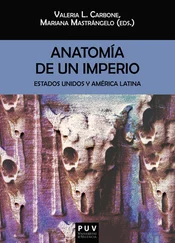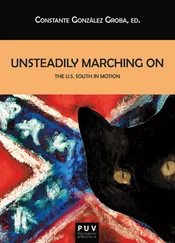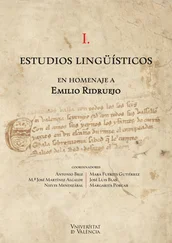When in the late 1960s Henry Kissinger said, “Nothing important can come from the South. The axis of history starts in Moscow, goes to Bonn, crosses over to Washington, and then goes to Tokyo. What happens in the South is of no importance” (qtd. in Hersh 263), he clearly did not imagine how the Global South could challenge Western and Eurocentric societies. Trained as a historian, Kissinger was obviously not interested in literary humanities and cultural studies; hence he did not foresee the advent of Global South literatures which could decenter the Anglophone literary world. Adopting transnational and postcolonial perspectives, however, allows literary critics 6 to track transnational cultural influences, see their manifestations and in so doing (re)invent the South in global connections. They center American studies in general, and Southern studies in particular, on critical discussions of race, ethnicity, culture, and/or nation in a global perspective. Through transnational lenses, translocal networks, and alternative histories scholars have begun extending the field of Southern studies. Instead of analyzing Southern literature and culture in isolation from the rest of the world, scholars started crossing cultural and/or geographical demarcations to push the regional boundaries of the US. The New Southern Studies repertoire reveals the porous boundaries of the region, engages in comparative studies with those south of the American South, and in so doing redraws the map of the South.
Scholars of the New Southern Studies often deal with minority literatures, search for transnational connectivity between the South and other global regions, 7 and employ postcolonial conceptual models and theory. 8 Before this the South represented the Other in the American imaginary; the contradictory differences between the North and the South were a result of what French geographer J.F. Staszak names, “a discursive process by which a dominant in-group (‘Us,’ the Self) constructs one or many dominated outgroups (‘Them,’ the Other) by stigmatizing a difference real or imagined – presented as a negation of identity and thus a motive for potential discrimination” (43). As such there existed an “asymmetry in power relations” since “only the dominant group [the North] is in a position to impose the value of its particularity (its identity) and to devalue the particularity of others (their otherness) [the South] while imposing corresponding discriminatory measures” (Staszak 43). The discourse of power defined the nation’s relationship with the othered region, much as in colonial subjugation, where the differences are exposed to justify the colonial power (Bhabha 118). This Us/North versus Them/South duality is perceptively captured in a quote from Orville Vernon Burton in which he appropriated Orientalist/colonialist discourse to talk about the South:
In the following passages by Said, I have substituted the words northern or Yankee for Said’s Orientalist, European, West , and the like, and the words South or southern for Orient, Arab, (Mid)East , and so on; all the other words belong to Edward Said: “Every statement made by Yankees … conveyed a sense of the irreducible distance separating northern from southern … [T]heir estrangement from the South simply intensified their feelings of superiority about northern culture … [The] central argument is the myth of the arrested development of the South … [and] theses of southern backwardness, degeneracy, and inequality with the North. (12) 9
The South served as a “negative reference point” against the North, and by extension the nation (Cobb 3). Building on Edward Said’s work on orientalism, David Jansson argues that the U.S. created and sustained a privileged national identity due to “internal orientalism,” a process which both endowed the imagined place called “the South” with objectionable qualities and exoticized the region with alluring but peculiar traits. Internal orientalism, as opposed to “regular” orientalism, Jansson explains, “allows the residents of the othered region some degree of access to the national political, cultural, and economic institutions. As a result, it becomes more likely that negative representations of the othered region will be complemented by positive representations” (“A Geography of Racism” 267).
Richard Gray points out that southerners are still driven “to position themselves with others in their locality, commonality of interest or area, and against or apart from others elsewhere” (“Forward” xxiii). Regional attachment and sensibility cannot be simply circumscribed by the region’s geographical referents. Historical events, religion, its peculiar economic system, racism, foodways, dialects, and other (im)material forms/representations of culture define the South as a socio-cultural construct and differentiate it from other imagined communities. Similarly, Scott Romine’s suggestion that the word South is “one of the few words which mean nothing much without quotes” ( The Real South 3), somehow reverberates with W.J. Cash’s observation from his 1941 classic The Mind of the South :
if it can be said there are many Souths, the fact remains that there is also one South. That is to say, it is easy to trace throughout the region … a fairly definite mental pattern, associated with a fairly definite social pattern – a complex of established relationships and habits of thought, sentiments, prejudices, standards and values, and associations of ideas. (xlviii)
Thus, regional community, apart from being delineated by geographical vectors, is also a cultural ideological construct. A sense of belonging and attachment seems to be created, performed and narrated into existence in the case of both regional and national communities.
While Benedict Anderson’s Imagined Communities examines nation-building and the formation of nationalism, his notion of imagined community can be applied to regions as well. Offering a theoretical perspective on regionalisms, Andrew Hurrell already realized this analytical possibility: “As with nations, so regions can be seen as imagined communities which rest on mental maps whose lines highlight some features whilst ignoring others” (41). 10 Applying Anderson’s theory to regions, Brasell explains that, “[l]ike the nation, residents of a region do not know each other although some claim they hold an ‘image of their communion’ as a community, ‘conceived as a deep, horizontal comradeship,’ ‘regardless of the actual inequality and exploitation that may prevail’” (5). Thus the South can be conceptually negotiated and imagined through regional attachment, sensibility and its inhabitants’ sense of belonging. Brasell goes on to explain that “just as the nation ‘has finite, if elastic, boundaries, beyond which lie other nations’ and therefore is not ‘coterminous with mankind,’ so too claims of the region (even if deterritorialized) as having finite boundaries beyond which lie other regions and therefore is not coterminous with the nation” (5).
Southern scholars such as Helen Taylor, Tara McPherson, Jon Smith, Deborah Cohn, and Scott Romine have already advanced, to use Romine’s explanation, “understanding of contemporary southern narrative as an archive of improvisations grounded in space and time, a register of imagined relations to artificial territorialities, themed spaces, virtual terrains, built environments, localities, and ‘the global’” ( The Real South 17). 11 By analyzing how the South’s imagined community is shaped by social formations and circulated through various forms of cultural production (literature, mass media, etc.) these scholars interrogate how the region creates its own narrative not just through nationalist imaginings, but also through transnational connections. Such a doubling of critical perspectives – transnational/hemispheric and subnational/regional imaginaries of the local, which coexist and intersect with each other – offers an opportunity for a reconfiguration of centers and peripheries in the imagined South.
Читать дальше












